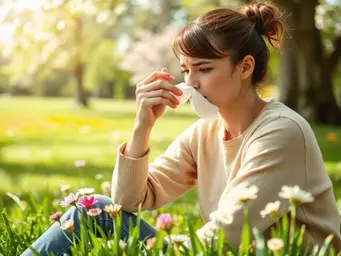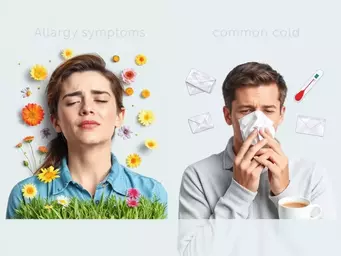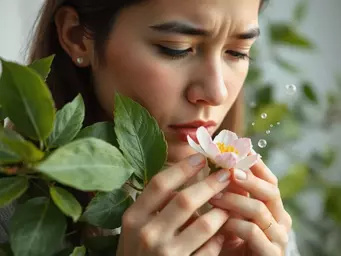Seasonal Allergies: Causes and Symptoms
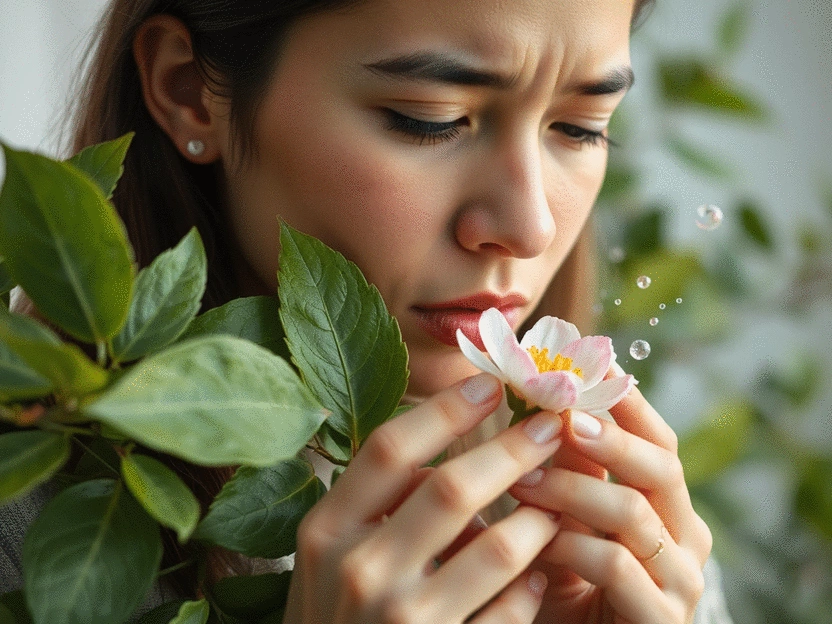
As we transition from winter to spring, many of us find ourselves sneezing and sniffling. But why does this happen? The answer lies in understanding seasonal allergies, which affect millions each year. This guide will equip you with essential knowledge to navigate allergy season with ease and confidence.
What You Will Learn
- Seasonal allergies, or hay fever, are primarily caused by pollen from trees, grasses, and weeds.
- Common symptoms include sneezing, itchy eyes, runny nose, and postnasal drip.
- Differentiating between allergies and colds is crucial; allergies don’t cause fevers or body aches.
- Proactive measures, like keeping windows closed during high pollen counts, can help manage symptoms.
- It’s important to consult an allergist if symptoms persist or worsen despite treatment.
Seasonal Allergy Triggers & Symptoms Overview
Understanding the common triggers and symptoms of seasonal allergies can help you better manage your reactions and prepare for allergy season. Below is a summary of the key elements to recognize.
Common Allergy Triggers
- ‣Tree pollen (Spring)
- ‣Grass pollen (Late Spring/Early Summer)
- ‣Weed pollen, especially ragweed (Late Summer/Fall)
Anticipate and prepare!
Key Allergic Rhinitis Symptoms
- ✓Sneezing, often in bursts
- ✓Itchy or watery eyes
- ✓Runny or stuffy nose
- ✓Postnasal drip leading to a cough
Recognize early for better management.
Actionable Steps for Management
- ★Keep windows closed during high pollen counts.
- ★Use air purifiers to reduce indoor allergens.
- ★Shower and change clothes after being outdoors.
Small steps, big impact.
When to Consult an Allergist
- ⚠Persistent symptoms despite OTC medications.
- ⚠Symptoms interfere with daily activities.
- ⚠Severe reactions requiring emergency treatment.
Don't hesitate to seek professional help.
Understanding Seasonal Allergies: A Comprehensive Overview
Have you ever noticed the first blooms of spring accompanied by a stuffy nose and relentless sneezing? For many, this is the onset of seasonal allergies, a common yet often misunderstood condition. At American College of Allergy, Asthma & Immunology, I aim to clarify the complexities of these allergic reactions, so you can better understand what you’re facing!
So, what exactly are seasonal allergies? They occur when your immune system mistakenly identifies certain environmental substances, like pollen, as harmful. This misidentification triggers a series of reactions, leading to the familiar symptoms of allergy season. It’s important to recognize that these reactions are entirely normal but can disrupt daily life significantly. In fact, millions of Americans are affected by seasonal allergies each year.
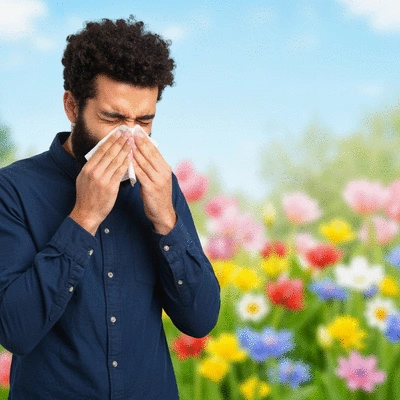
What Are Seasonal Allergies and Why Do They Occur?
Seasonal allergies, also known as hay fever or allergic rhinitis, often arise during specific times of the year. Common triggers include different types of pollen released by trees, grasses, and weeds. Your body’s immune system reacts to these allergens as if they are threats, releasing histamines that cause symptoms like sneezing, itching, and congestion.
- Pollen from trees—typically high in spring
- Grass pollen, which peaks in late spring and early summer
- Weed pollen, especially ragweed, prevalent in late summer through fall
Understanding these seasons can help you anticipate symptoms and prepare accordingly. By knowing when to expect these triggers, you can take proactive measures to minimize your exposure.
Recognizing Common Allergic Rhinitis Symptoms
As someone who has dedicated over a decade to understanding allergies, I often hear questions about the symptoms of allergic rhinitis. Recognizing these symptoms early on can significantly enhance your quality of life. Here are the common signs to watch for:
- Sneezing, often in bursts
- Itchy or watery eyes
- Runny or stuffy nose
- Postnasal drip leading to a cough
It's crucial to differentiate these symptoms from those of a cold. While both can cause nasal congestion and sneezing, seasonal allergies typically do not produce fevers or body aches, which are common with colds.
Identifying Symptoms: Sneezing, Itchy Eyes, and More
If you’ve experienced any of the symptoms mentioned, you’re not alone! Millions deal with similar reactions. Keeping a symptom diary can help you identify patterns and triggers. This simple step can empower you to take control of your environment and manage your symptoms more effectively. Let’s work together to make allergy season less daunting!
Identifying the Causes of Seasonal Allergies
Understanding what causes your seasonal allergies is key to managing them effectively. Identifying these triggers not only provides clarity but also allows for strategic planning to minimize their impact. Let’s dive into the various sources of pollen and other environmental factors that can contribute to your allergic reactions!
- Types of pollen and their impact on allergies
- Environmental factors, including mold and air quality
- How climate change is influencing allergen seasons. For instance, the EPA tracks how ragweed pollen season has lengthened in many areas.
Pro Tip
To effectively manage your seasonal allergies, consider using a pollen tracking app. These tools can provide real-time updates on pollen levels in your area, allowing you to plan outdoor activities accordingly. Staying informed is key to reducing exposure and alleviating symptoms!
Frequently Asked Questions About Seasonal Allergies
Here are some common questions to help you better understand and manage seasonal allergies:
- Q: What causes seasonal allergies?
- A: Seasonal allergies are primarily caused by the immune system reacting to pollen from trees, grasses, and weeds, which are released into the air during specific times of the year.
- Q: What are the most common symptoms of seasonal allergies?
- A: Common symptoms include sneezing (often in bursts), itchy or watery eyes, a runny or stuffy nose, and postnasal drip leading to a cough.
- Q: How do I differentiate between seasonal allergies and a cold?
- A: Unlike a cold, seasonal allergies typically do not cause a fever or body aches. Allergy symptoms also tend to persist as long as you are exposed to the allergen, while a cold usually resolves within a week or two.
- Q: What are some practical steps I can take to manage my allergies?
- A: Practical management tips include keeping windows closed during high pollen counts, using air purifiers indoors, and showering and changing clothes after spending time outdoors to remove pollen.
- Q: When should I consult an allergist?
- A: You should consult an allergist if your symptoms are persistent despite over-the-counter medications, if they significantly interfere with your daily activities, or if you experience severe reactions.
Key Takeaways on Seasonal Allergies
Understanding seasonal allergies is crucial for managing symptoms effectively. These allergies, primarily triggered by pollen from trees, grasses, and weeds, can significantly impact your quality of life. Recognizing the causes, symptoms, and diagnosis of seasonal allergies will empower you to take control of your health.
- Causes: Pollen from various plants is the main culprit.
- Symptoms: Sneezing, itchy eyes, runny nose, and fatigue are common.
- Diagnosis: Allergy testing methods can help identify specific allergens.
Being well-informed is the first step towards effective allergy management. For many, this means recognizing the early signs of an allergic reaction and knowing when to take action.
When to Seek Help from an Allergist
It's important to know when to consult with an allergist. If you experience persistent symptoms despite over-the-counter medications, or if your symptoms interfere with daily activities, it may be time to get professional help. I always encourage my patients to consider seeing an allergist if they notice:
- Severe reactions that require emergency treatment.
- Symptoms that worsen or do not improve with usual home treatments.
- A family history of severe allergies or asthma.
Getting the right diagnosis can lead to tailored treatment plans that significantly improve your quality of life. Remember, it’s always better to be proactive about your health!
Actionable Steps for Allergy Sufferers
Managing seasonal allergies can feel overwhelming, but there are practical steps you can take to minimize symptoms. I’ve seen firsthand how a little preparation can go a long way in making life more comfortable during allergy season!

Practical Management Tips for Seasonal Allergies
Here are some effective strategies to help manage your seasonal allergies:
- Keep windows closed during high pollen counts.
- Use air purifiers to reduce indoor allergens.
- Shower and change clothes after being outdoors to remove pollen.
Each of these steps can help alleviate symptoms and make your home a safe haven. The key is finding what works best for you.
Emergency Treatment Options for Severe Allergic Reactions
In case of a severe allergic reaction, it's critical to know your options:
- Carry an epinephrine auto-injector if prescribed.
- Seek immediate medical assistance during severe symptoms.
- Recognize signs of anaphylaxis, such as difficulty breathing or swelling.
Being prepared can be life-saving, so always have a plan in place.
Resources for Further Support and Information
For more information about seasonal allergies, consider these resources:
- What Are Allergies website for educational articles and guides.
- Local allergists for personalized care and treatment plans.
- Community support groups for shared experiences and coping strategies.
Don’t hesitate to reach out for help or more information. Remember, you’re not alone in this journey—there’s a supportive community ready to help you navigate through your seasonal allergies!
Recap of Key Points
Here is a quick recap of the important points discussed in the article:
- Understanding Seasonal Allergies: Seasonal allergies, or hay fever, occur when the immune system mistakenly identifies pollen from trees, grasses, and weeds as harmful.
- Common Symptoms: Symptoms include sneezing, itchy or watery eyes, runny or stuffy nose, and postnasal drip.
- Identifying Triggers: Recognizing the specific pollen types and environmental factors can help manage and anticipate allergy symptoms.
- Management Tips: Keep windows closed during high pollen counts, use air purifiers, and shower after outdoor activities to reduce pollen exposure.
- When to Seek Help: Consult an allergist if symptoms persist despite treatment or significantly disrupt daily life.









